What is CNC prototyping machining machining?
CNC prototype machining is a manufacturing process used to create a sample or prototype of a product. It typically uses computer-aided design (CAD) software and computer numerical control (CNC) machines to precisely cut and shape materials to create a model that resembles the final product. These prototypes can be used to test product design and performance and make necessary modifications and improvements. CNC prototype machining is widely used in industries such as rapid manufacturing, automotive, aerospace, medical devices, and consumer goods.
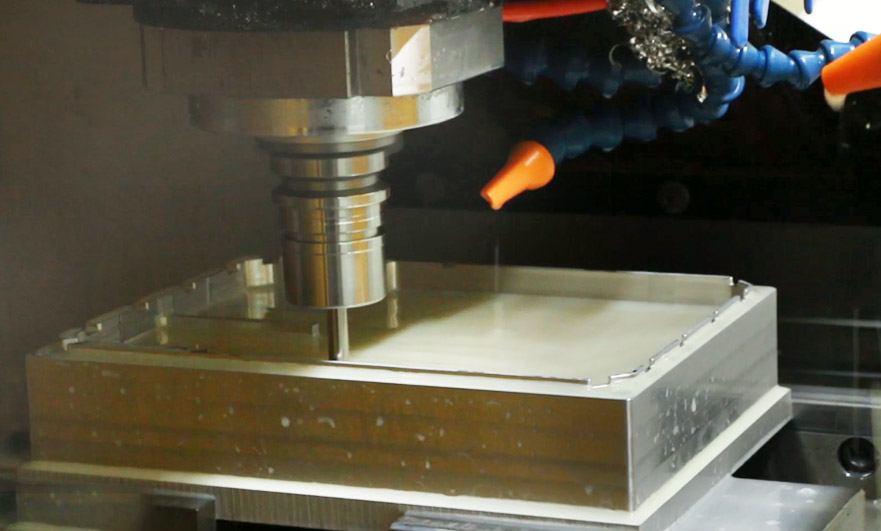
What is the difference between CNC machining and CNC prototyping machining?
CNC machining is a manufacturing process that utilizes computer-controlled automated equipment or systems to handle and process materials to create parts or products. CNC prototype machining is a branch of CNC machining and manufacturing, which is to input CAD files into CNC machine tools for prototype machining and manufacturing.
Specifically, the main goal of CNC machining and manufacturing is to mass-produce high-precision, repetitive parts or products, which are often used in the field of industrial production. CNC prototyping machining focuses on small-scale individual needs, such as quickly producing a single or a small number of prototype samples, performing functional tests or user feedback, and is often used in design and development, research experiments and other fields.
In addition, CNC prototyping machining usually requires higher precision and wider adaptability, because it needs to meet the manufacturing and testing requirements of high-quality prototypes, including requirements for shape, size, surface quality, etc. Relatively speaking, the requirements for CNC machining and manufacturing can be relatively low, because it mainly considers high-efficiency and low-cost manufacturing.
In short, both CNC machining and CNC prototyping machining are very important technologies in the field of modern manufacturing. They are closely related and interact, but there are also certain differences.
Why is CNC machining suitable for CNC prototype machining?
Reasons Why CNC Machining is Suitable for Prototype Manufacturing:
High Precision: CNC machines can achieve extremely high machining accuracy and repeatability, reducing errors and waste. This is crucial for producing prototypes that require precise dimensions and features.
Fast Manufacturing: CNC machines enable automated machining, significantly reducing production cycles and improving the speed and efficiency of prototype manufacturing.
Flexibility: CNC machines can process a wide variety of materials, including plastics, metals, wood, and more. They can also quickly switch between different tools and fixtures to accommodate various shapes and sizes required for CNC prototype machining.
Digital Control: CNC machines utilize digital control systems, allowing for precise control of the machining process through computer programming. This enhances machining accuracy and repeatability while reducing human errors.
In summary, CNC machining technology offers advantages such as high precision, efficiency, flexibility, and digital control, making it highly suitable for the prototype manufacturing process.
Different CNC prototyping machining manufacturing processes
CNC Engraving: Using cutting tools to carve and cut on the surface of materials, suitable for creating flat or curved prototypes.
CNC Milling: Removing excess material from the surface of materials using rotating cutting tools, suitable for producing prototypes with complex shapes and structures.
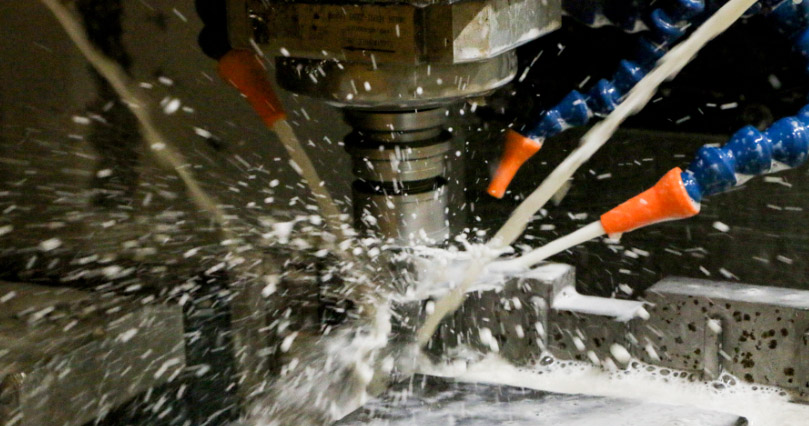
CNC Dispensing: Controlling the flow rate and position of adhesive using robots or automated dispensing equipment to apply adhesive onto materials, suitable for creating prototype components that require bonding.
CNC Mold Making: The process of producing various metal molds, such as injection molds and die-casting molds, used for mass production of prototypes that require plastic or metal shaping.
3D Printing: Layer-by-layer stacking and solidifying of materials using 3D printers, suitable for producing small batches of prototypes with complex shapes and structures.

In summary, different CNC prototype manufacturing processes can be selected according to specific prototype production requirements.
What are the four steps in the CNC prototyping machining process?
The process of prototype production generally includes the following four steps:
Design Phase: In the design phase, the initial design of the product is created through hand sketches, CAD design software, or other assisting tools. The focus of this phase is to determine the requirements in terms of dimensions, shape, and functionality of the product.
Manufacturing Phase: In the manufacturing phase, the prototype is fabricated based on the design drawings or 3D models. The emphasis during this phase is on selecting suitable materials and manufacturing methods, such as CNC machining, 3D printing, laser cutting, etc., and ensuring that the produced prototype meets the design requirements.
Testing Phase: In the testing phase, the manufactured prototype is evaluated and tested to ensure that it meets the design and functional requirements. The focus of this phase is to test various indicators such as strength, wear resistance, service life, etc.
Revision and Improvement Phase: After identifying any issues during the testing process, the prototype needs to be revised and improved to achieve better results. The focus of this phase is to understand the test results and make adjustments and improvements based on experimental data to enhance the quality and performance of the prototype.
In summary, each phase from design to manufacturing, testing, and improvement is crucial in the process of prototype production. It requires comprehensive considerations and strict adherence to the workflow to achieve the best possible outcome.
What materials can CNC prototype machining manufacture?
There are various types of materials used in prototype manufacturing, and different materials are suitable for different needs and applications. Here are some common metal and plastic prototype materials:
Metals:
Metal materials are characterized by high strength, toughness, wear resistance, and good thermal conductivity, making them suitable for manufacturing components that need to withstand high pressure or operate in high-temperature environments. Common metal materials include aluminum alloys, steel, copper, magnesium alloys, etc.
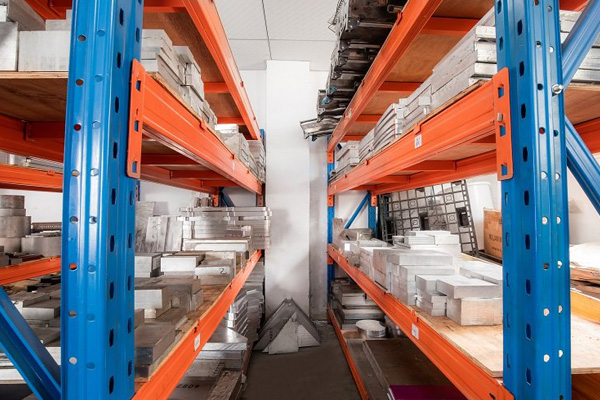
Aluminum Alloys: Aluminum alloys are lightweight, high-strength, and have good machinability, making them widely used in prototype manufacturing for aerospace, automotive, electronics, and other industries.
Steel: Steel has high strength, wear resistance, and corrosion resistance, making it suitable for manufacturing parts that need to withstand high pressure or operate in high-temperature environments, such as mechanical equipment, automotive components, etc.
Stainless Steel: Stainless steel has good corrosion resistance, high surface finish, and ease of maintenance, making it commonly used for manufacturing high-end product enclosures, accessories, etc.
Copper: Copper has good electrical conductivity, thermal conductivity, and machinability, making it suitable for prototype manufacturing in the electronics, architectural decoration, and art industries.
Magnesium Alloys: Magnesium alloys are known for their lightweight, high strength, and good seismic performance, making them suitable for manufacturing parts such as mobile phone components, automotive seat frames, etc.
Zinc Alloys: Zinc alloys have low melting points and good plasticity, making them commonly used for manufacturing precision mechanical parts, electronic device casings, etc.
Titanium Alloys: Titanium alloys have high strength, low density, and corrosion resistance, making them widely used in prototype manufacturing for aerospace, medical, and other industries.
In addition to the above materials, there are many other metal materials to choose from, such as nickel alloys, iron alloys, cast iron, etc. When selecting metal materials for prototype manufacturing, it is important to choose the most suitable material based on the actual needs and requirements of the project.
Plastics:
Plastics are one of the most common prototype materials, known for their low cost, ease of processing, and the ability to be easily colored and painted, making them widely used in various industries. Common plastic materials include ABS, PC, PP, PVC, etc.

ABS: ABS is a commonly used engineering plastic known for its good processability and mechanical properties. It is often used in the manufacturing of electronic product casings, appliance accessories, models, etc.
PC (Polycarbonate): PC is a high-strength, high-toughness plastic material with good heat resistance and UV resistance. Due to its lightweight, high transparency, and resistance to corrosion, PC is widely applied in automotive components, optical devices, medical instruments, etc.
POM (Polyoxymethylene): POM is a high-strength, rigid plastic material known for its excellent wear resistance and chemical resistance. It is commonly used in the manufacturing of mechanical parts, bearings, pulleys, etc.
PMMA (Polymethyl Methacrylate): PMMA is a transparent plastic material with excellent optical properties and weather resistance. It is often used in the production of lampshades, displays, decorations, etc.
PA (Nylon): PA is a high-strength, high-toughness engineering plastic with good mechanical and wear resistance properties. Due to its lightweight and corrosion resistance, PA is frequently used in automotive, aerospace, electronics, and other fields.
PP: PP is a lightweight, high-strength, corrosion-resistant plastic material with good plasticity and mechanical properties. It is commonly used in the manufacturing of automotive components, containers, appliance accessories, etc.
In addition to the above materials, there are many other plastic materials available for CNC prototype machining, such as PTFE, PVC, Ethylene Vinyl Acetate (EVA), etc. When selecting materials, it is important to consider the requirements and application scenarios of the prototype and choose the most suitable material.
CNC prototype machining Surface Treatment
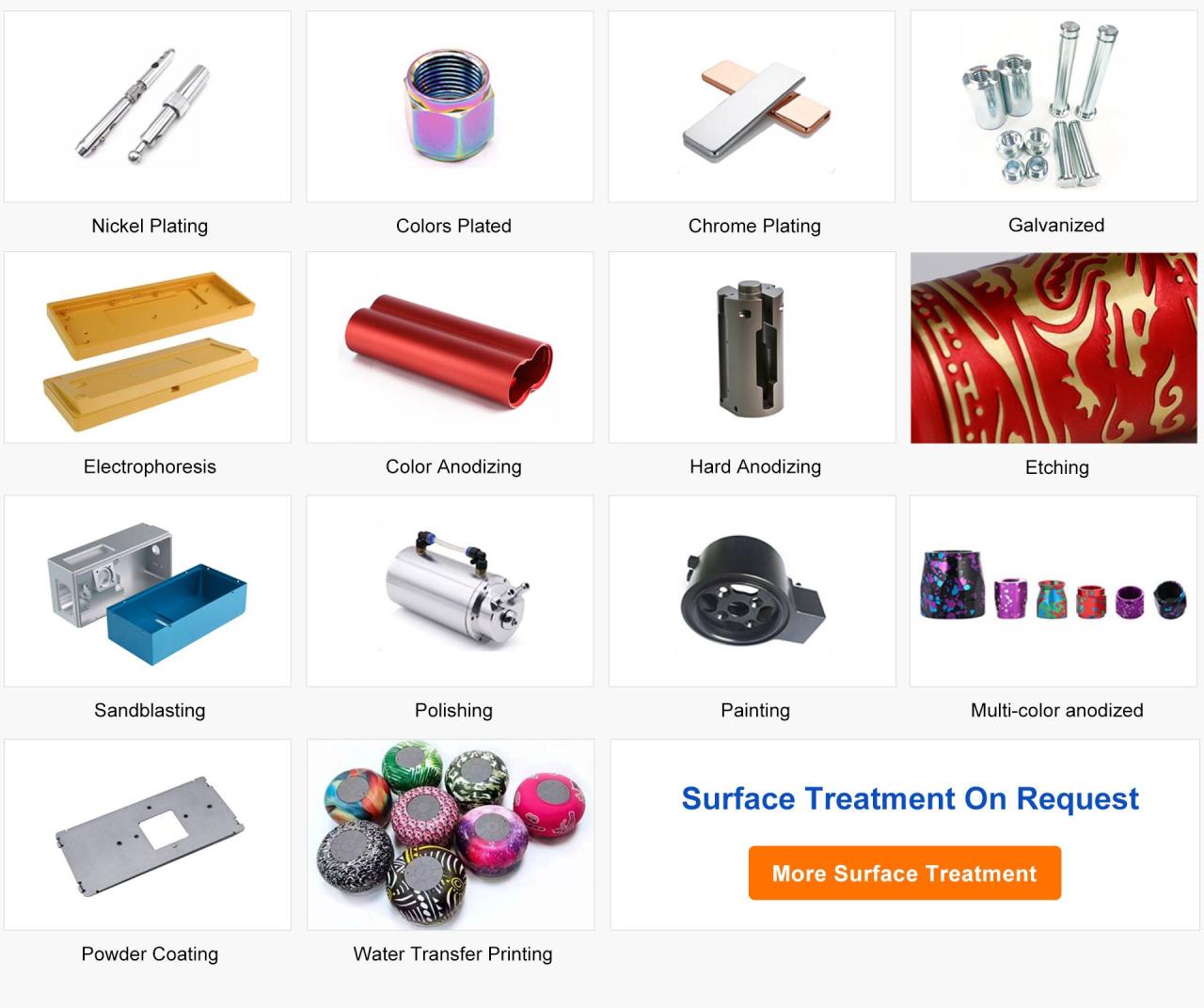
Advantages of CNC Machining Prototypes
The advantages of CNC machining for prototypes include:
High Precision: CNC machining enables high processing accuracy and repeatability, reducing errors and waste, thereby improving the quality of prototypes.
Rapid Manufacturing: CNC machining automates the manufacturing process, significantly reducing the production cycle, thereby enhancing the speed and efficiency of prototype production.
Flexibility: CNC machining can process various materials, including plastics, metals, wood, etc. It can also quickly switch between different tools and fixtures to accommodate CNC prototype machining requirements of different shapes and sizes.
Reproducibility: Through programming the numerical control system, CNC machining can achieve consistent processing results, ensuring the reproducibility of prototypes.
Ease of Modification: CNC machining allows for easy adjustment of tool paths and operating parameters as needed, facilitating modifications and improvements to prototypes.
Cost Saving: Compared to traditional manual production, CNC machining reduces labor, time, and material consumption, resulting in cost savings.
In summary, CNC machining for prototypes offers advantages such as high precision, rapid manufacturing, flexibility, reproducibility, ease of modification, and cost savings, making it an indispensable tool in modern manufacturing industries.
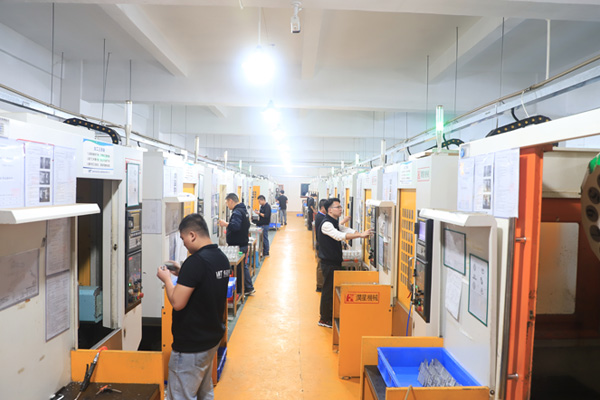
Limitations of CNC Machining Prototypes
The limitations of CNC machining for prototype production include:
Material Limitations: CNC machining requires the selection of suitable materials for processing and cannot handle materials that are excessively hard, brittle, or too soft.
Size Limitations: CNC machining equipment has limited processing ranges and cannot handle excessively large prototypes.
Complex Geometric Shapes: For prototypes with extremely complex, intricate, and convoluted geometric shapes, CNC machining may require highly complex tool paths and machining programs, thereby increasing production difficulties and costs.
High Software Programming Requirements: CNC machining requires the use of specialized CAD/CAM software for programming, demanding a certain level of technical skill and experience. Designers need to possess the relevant skills and knowledge.
Higher Costs: Despite the high manufacturing efficiency of CNC machining, the equipment and operational costs are relatively high, especially for small-batch and individual prototype production, leading to higher costs.
Environmental Concerns: CNC machining consumes a significant amount of energy and materials, and during the machining process, it generates waste and wastewater, requiring proper treatment to meet environmental protection requirements.
In conclusion, CNC machining for prototype production has certain limitations. Designers and manufacturing companies need to consider various factors when choosing the machining method and employ different machining techniques and approaches based on the specific circumstances.
Applications of CNC prototyping machining
CNC prototype machining has wide-ranging applications, including:
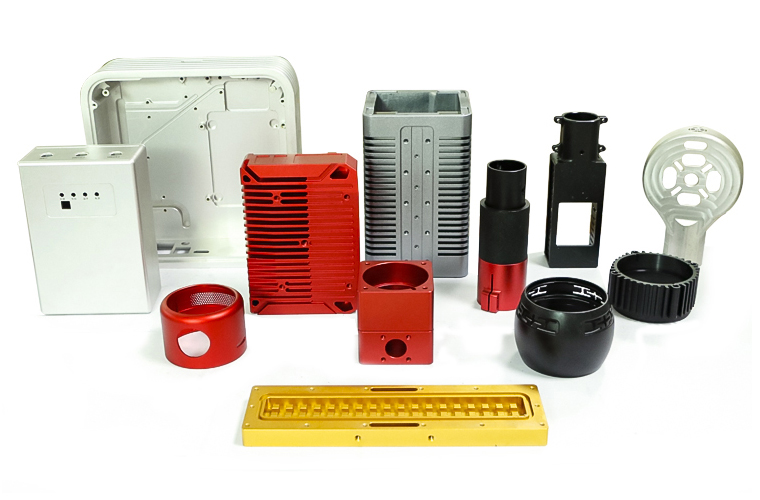
Automotive Industry: Used for automotive component prototype production, automotive mold manufacturing, etc.
Aerospace Industry: Used for aircraft components, aerospace engine parts, spacecraft prototype production, etc.
Medical Device Industry: Used for medical device prototype production and medical device mold manufacturing, among others.
Industrial Design: Used for prototype production of various products, such as smartphones, computers, home appliances, etc.
Education and Training: Used in schools and training institutions for teaching and experimentation, helping students better understand and master CNC machining technology.
Maker and Personal Prototype Production: Used by makers and individuals to create various small-batch or individual prototypes, catering to the demand for personalized customization.
In conclusion, CNC prototype machining finds extensive applications in manufacturing, design, healthcare, education, and personal fabrication, among other fields.
CNC Machining Prototypes Compared to Injection Molded Prototypes
CNC prototype machining and injection molding are two commonly used methods for prototype production, each with its own advantages and disadvantages:
Production Time: CNC machining can quickly produce prototypes, while injection molding requires the creation of molds, resulting in longer production times.
Manufacturing Cost: CNC machining is suitable for small-batch or individual prototype production, resulting in higher costs. In contrast, injection molding has relatively lower manufacturing costs and is more suitable for large-scale production.
Manufacturing Precision: CNC machining produces prototypes with high precision and good surface finish, whereas injection molding prototypes have relatively lower precision and surface finish compared to CNC machining.
Material Selection: CNC machining can work with various materials, including plastics, metals, and wood, whereas injection molding is limited to plastics.
Sample Preparation: Injection molding can produce samples that are nearly identical to the final product, while CNC machining requires additional surface finishing and assembly work.
In conclusion, CNC prototype machining and injection molding each have their own advantages and limitations. The choice of the appropriate method depends on specific requirements and considerations in practical applications.
Is there a better CNC prototyping Manufacturing option than CNC machining?
There is no absolute best choice for prototype production, as different methods have their own advantages and limitations. The selection of the most suitable method depends on specific needs and requirements.
In addition to CNC prototype machining, other commonly used prototype production methods include:
3D Printing: Suitable for creating simple prototypes, it offers fast manufacturing speed and lower costs, but with relatively lower precision and surface quality.
Laser Cutting: Suitable for cutting materials like metal, it provides high precision but is limited to two-dimensional processing.
Vacuum Casting: Suitable for small-batch production of complex-shaped prototypes, it has relatively higher costs but can produce high-quality prototypes.
Rapid Injection Molding: Suitable for large-scale production with fewer material options and lower costs, but it has a longer manufacturing cycle.
Manual Machining: Suitable for creating small-sized prototypes with unique shapes, manual fabrication offers flexibility and innovation, but with relatively lower precision and efficiency.
In conclusion, when choosing a prototype production method, it is essential to consider factors such as product design requirements, quantity demands, budget, and time constraints. This allows for the selection of the most suitable method to achieve the best results.
How is CNC prototyping machining different from 3D printing?
CNC prototype machining and 3D printing are two different methods for prototype production. While both can be used for rapid prototyping, they have differences in principles, processing methods, and applicable scenarios.
Firstly, CNC prototype machining utilizes computer numerical control (CNC) machines, which precisely move the workpiece in the X, Y, and Z axes. It shapes the desired form and contour through cutting, milling, drilling, and other operations with tools. On the other hand, 3D printing constructs product models by adding materials in specific areas, layer by layer, until the entire model is completed.
Secondly, CNC prototype machining is suitable for creating high-precision and complex-structured prototypes, while 3D printing is more appropriate for relatively simple and single-structured prototypes, such as mechanical parts, automotive components, and medical devices.
Lastly, there are differences in terms of cost, material selection, manufacturing speed, and surface quality. CNC prototype machining is typically used for small-batch or single prototype production, with relatively higher costs. It requires high-precision materials and has a slower processing speed. However, it produces prototypes with good surface finish and high precision. On the other hand, 3D printing is suitable for large-scale production, with lower costs. It allows for the use of various materials and offers faster manufacturing speed. However, its processing precision and surface quality are relatively lower.
In summary, CNC prototype machining and 3D printing are different methods for prototype production, and the choice of the appropriate method depends on specific needs and requirements.
Comparison Between CNC prototyping machining and 3D Printing
CNC prototype machining and 3D printing are two commonly used methods for prototype production, and they each have their own advantages and disadvantages:
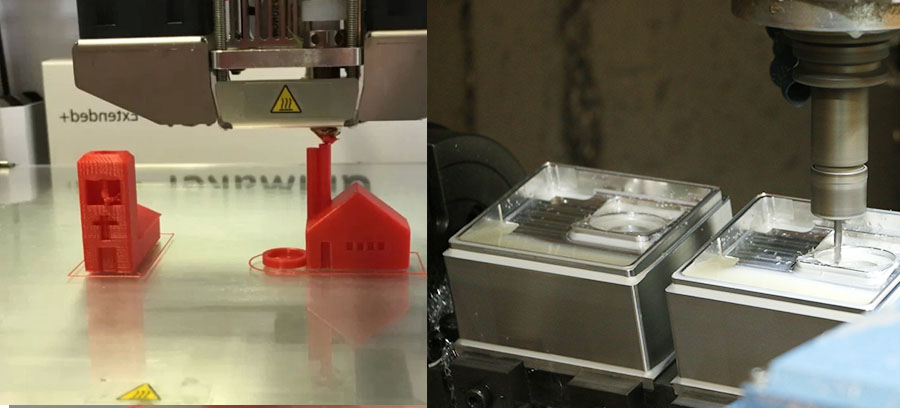
Production Time: 3D printing is typically faster than CNC machining and can complete most prototype production within a short timeframe.
Manufacturing Cost: 3D printing is suitable for small-batch or single prototype production, with lower costs. On the other hand, CNC machining has relatively higher manufacturing costs and is more suitable for large-scale production.
Manufacturing Precision: CNC machining produces prototypes with high precision and good surface finish, while 3D printing has relatively lower prototype precision and surface finish compared to CNC machining.
Material Selection: CNC machining can process a variety of materials, including plastics, metals, and wood, whereas the material selection range for 3D printing is relatively narrow.
Sample Preparation: 3D printing can create samples that are nearly identical to the final product, while CNC machining requires additional surface finishing and assembly work.
Complexity: 3D printing is suitable for complex shapes with simple structures, while CNC machining is suitable for prototypes that require high precision and complex structures.
In summary, CNC prototype machining and 3D printing each have their own strengths and limitations, and the choice of the appropriate method depends on specific requirements and needs. Factors such as materials, product quality, and complexity typically influence the selection of the preferred prototype manufacturing method.
Considerations and Tips for CNC prototype machining
Material Selection: Choose suitable materials based on the prototype requirements. Different materials may require different machining methods and parameters.
Tool Selection: Select appropriate tools based on the prototype’s shape, size, and material. Tool selection has a significant impact on machining results and costs.
Optimization of Machining Paths: Optimize machining paths and parameters to minimize errors and waste, while improving accuracy and efficiency.
Workpiece Fixturing: Proper workpiece fixturing is crucial for maintaining machining precision. Ensure fixture stability and positioning accuracy.
Surface Treatment: Post-machining surface treatments such as deburring, polishing, and painting may be necessary to achieve the desired quality and appearance of the final product.
Equipment Maintenance: Regular maintenance and upkeep of CNC machining equipment are essential to ensure proper functioning, prolong equipment lifespan, and maintain production efficiency and product quality.
Programming Techniques: Programming is a critical aspect of CNC prototype machining. Designers need to possess solid CAD/CAM knowledge and extensive programming experience to ensure program accuracy and efficiency.
In summary, CNC prototype machining requires attention to material selection, tool selection, optimization of machining paths, workpiece fixturing, surface treatment, equipment maintenance, and programming techniques. By considering these aspects and applying appropriate techniques, one can achieve excellent machining results and high-quality products.
How much does CNC prototyping machining cost?
The cost of CNC prototype machining is influenced by various factors, including the following:
Prototype Size and Complexity: Larger and more complex prototypes require more materials and longer processing time, resulting in higher costs.
Material Type and Quantity: Different materials have different prices and levels of difficulty in processing. For example, metal materials tend to be more expensive. Additionally, the amount of material used and waste generated can also impact the overall cost.
Machining Method and Equipment Type: Different machining methods and types of equipment have varying efficiency and costs. For instance, CNC machine tools and 3D printers may have significant cost differences in their machining processes.
Batch Size and Production Cycle: Generally, larger production batches tend to have lower unit prices, while shorter production cycles may require more resources such as labor and equipment, thus increasing costs.
In summary, when determining the cost of CNC prototype machining, it is necessary to consider the above factors and evaluate and calculate based on the specific circumstances. The cost of CNC prototype machining can typically range from hundreds to tens of thousands of dollars, depending on project requirements, manufacturing complexity, and other factors.
| Machine type | Complexity | CNC prototype machining price | Batch CNC processing price |
|---|---|---|---|
| Automatic lathe | Generally | $10 | $3 |
| CNC lathe | Generally | $80 | $7 |
| Turn-mill combination | Generally | $120 | $9 |
| Citizen swiss-type Automatic Lathe | Generally | $150 | $10 |
| CNC prototype machining | Low-high | $5000 | $1500 |
| 3D printing | Low-moderate | $5000 | $1000 |
| Injection molding | Low-moderate | $5000 | $500 |
Why are CNC machined prototypes expensive?
CNC machining prototypes may be relatively more expensive compared to traditional manual machining or other manufacturing methods, and this is due to several factors:
Equipment and Technology Costs: CNC machining requires the use of high-precision machine tools, computer control systems, and training of skilled technicians. The cost of these equipment and technologies is high, leading to an increase in machining prices.
Material Costs: High-quality raw materials are typically more expensive, such as metal materials and high-performance plastics. Additionally, different types of materials have varying prices and processing difficulties. For example, metal materials are generally more costly. The quantity of material used and waste generated also affect the final price.
Processing Difficulty and Time: Complex and large-sized prototypes require longer processing time and higher technical requirements, which contribute to increased machining prices.
Production Cycle and Demand: A shorter production cycle requires more resources, such as labor and equipment, to expedite the machining process. Additionally, a higher demand usually results in a longer processing time, directly impacting the machining price.
In summary, the relatively higher cost of CNC machining prototypes is primarily due to the higher costs involved, including high-quality materials, skilled technicians, and specialized equipment. The longer processing time is also a contributing factor. Despite the higher price, CNC machining offers the advantages of ensuring manufacturing quality and efficiency, making it crucial in demanding applications.
How long does CNC prototyping machining take?
The time required for CNC prototype machining depends on various factors, including the following:
Prototype Size and Complexity: Larger and more complex prototypes typically require longer processing time, resulting in a longer production time.
Material Type and Quantity: Different materials have varying levels of difficulty and time consumption during processing. For example, metal materials usually require longer processing time. Additionally, the quantity of material used can also impact the processing time.
Machining Method and Equipment Type: Different machining methods and equipment types have varying processing efficiency and speed. For instance, CNC machine tools are generally faster than traditional manual machining.
Production Cycle and Demand: A shorter production cycle may require more resources, such as labor and equipment, to accelerate the machining process. Similarly, a higher demand usually leads to a longer processing time.
In summary, when determining the time required for CNC prototype machining, these factors should be taken into consideration. Generally, simple prototypes may be completed in a few hours or a day, while more complex prototypes may take several days or longer. The specific machining time can be adjusted based on project requirements, equipment performance, material selection, and other factors.